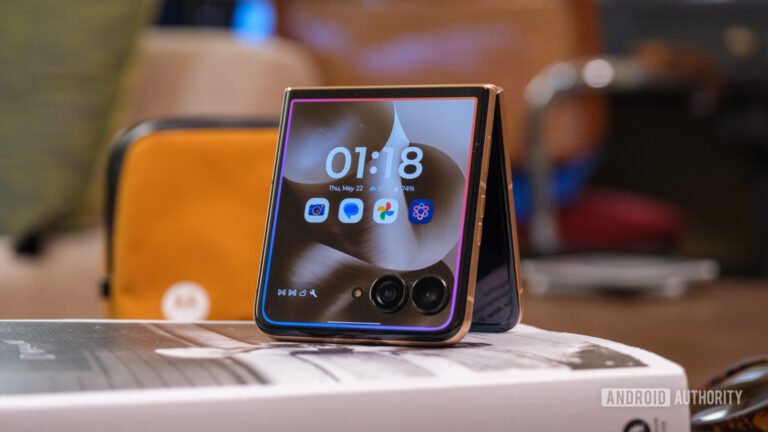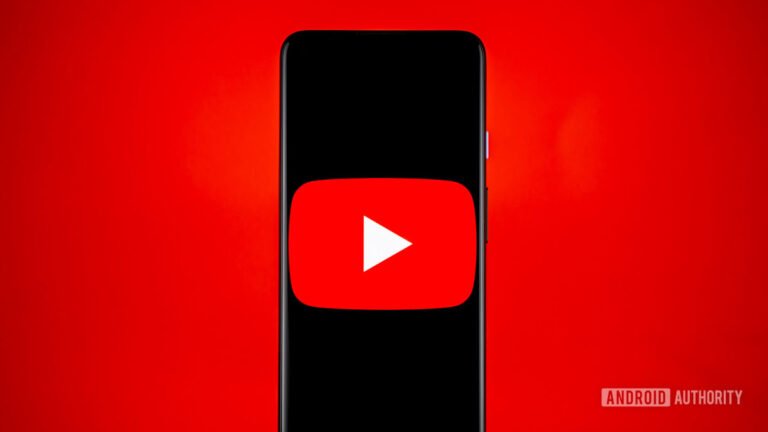![]()
This time around, we’re comparing two smartphones from Google. We’ll be comparing the Google Pixel 9 Pro XL vs Google Pixel 8 specs. In other words, this is a comparison between the company’s most powerful smartphone (at the moment), vs the most powerful compact smartphone from the generation before. There are quite a few differences between these two phones, aside from their size.
As we usually do, we’ll first list the specs of both phones and will then move to other categories. We’ll be comparing their designs, displays, performance, battery life, cameras, and audio output. The Pixel 9 Pro XL is a more powerful smartphone, but let’s see how it compares to the Pixel 8 overall, shall we?
Specs
Google Pixel 9 Pro XL
Google Pixel 8
| Google Pixel 9 Pro XL | Google Pixel 8 | |
|---|---|---|
| Dimensions | 162.8 x 76.6 x 8.5 mm | 150.5 x 70.8 x 8.9 mm |
| Weight | 221 grams | 187 grams |
| Display | 6.8-inch LTPO OLED | 6.2-inch OLED |
| Refresh rate | 1-120Hz (adaptive) | 120Hz |
| Resolution | 2992 x 1344 | 2400 x 1080 |
| Chipset | Google Tensor G4 | Google Tensor G3 |
| RAM | 16GB (LPDDR5X) | 8GB (LPDDR5X) |
| Storage | 128GB/256GB/512GB/1TB (UFS 3.1) | 128GB/256GB (UFS 3.1) |
| Main camera | 50MP (f/1.7 aperture, 1/1.31-inch sensor size, 1.2um pixel size, dual pixel PDAF, OIS) | 50MP (f/1.7 aperture, 1/1.31-inch sensor size, 1.2um pixel size, dual pixel PDAF, OIS) |
| Ultra-wide camera | 48MP (f/1.7 aperture, 1/2.55-inch sensor size, 123-degree FoV, dual pixel PDAF) | 12MP (f/2.2 aperture, 1/2.9-inch sensor size, 126-degree FoV, 1.25um pixel size) |
| Telephoto camera | N/A | N/A |
| Periscope telephoto camera | 48MP (f/2.8 aperture, 1/2.55-inch sensor size, dual pixel PDAF, OIS, 5x optical zoom) | N/A |
| Selfie camera | 42MP (f/2.2 aperture, PDAF) | 10.5MP (f/2.2 aperture, 1/3.1-inch sensor size, 1.22um pixel size) |
| Battery size | 5,060mAh | 4,575mAh |
| Charging | 37W wired, 23W wireless (Pixel Stand), 12W wireless (Qi), 5W reverse wired (charger not included) | 27W wired, 18W wireless (Pixel Stand), 5W reverse wireless (charger not included) |
| Colors | Porcelain, Rose Quartz, Hazel, Obsidian | Obsidian, Hazel, Rose, Mint |
Google Pixel 9 Pro XL vs Google Pixel 8: Design
Yes, there are some similarities in terms of the design, but Google did change things up with the Pixel 9 series. While both of them have flat displays with a centered display camera hole, and thin, they feel entirely different in the hand. Before we get to it, do note that the Pixel 9 Pro XL does have slightly thinner bezels than the Pixel 8. Both phones also have their power/lock and volume rocker buttons on the right-hand side, with the power/lock button sitting above the volume rocker buttons.
With that being said, the Pixel 9 Pro XL has a flat frame all around. It does have slightly rounded corners for comfort’s sake, but the frame is flat. That’s not the case with the Pixel 8, which has a slightly rounded frame. Something similar can be said for their backplates. The one on the Pixel 9 Pro XL is flat, while the Pixel 8’s curves towards the edges. They are both made out of aluminum and glass, though, even though they have different glass plates on the back.
The Google Pixel 9 Pro XL has the Gorilla Glass Victus 2 glass backplate. The Pixel 8 utilizes the Gorilla Glass Victus. You’ll notice horizontal camera bars on the back, too. The one on the Pixel 9 Pro XL has a pill shape, and it hosts three cameras. The Pixel 8’s camera bar is longer, and it connects to the frame on both left and right sides. It also has a downward slope towards the frame on the sides. There are two cameras included on the inside.
The Google Pixel 9 Pro XL has a much larger display in comparison, and is much larger in general. It is taller, wider, and a bit thinner in comparison. It’s also 34 grams lighter than the Pixel 8. Both smartphones come with an IP68 certification for water and dust resistance.
Google Pixel 9 Pro XL vs Google Pixel 8: Display
The Google Pixel 9 Pro XL has a 6.8-inch LTPO OLED display that is flat and has a resolution of 2992 x 1344 pixels. It supports HDR10+ content, and it has an adaptive refresh rate (1-120Hz). This panel goes up to 3,000 nits of peak brightness. The screen-to-body ratio here is around 88%, while the display aspect ratio is 20:9. The Gorilla Glass Victus 2 protects this panel.

The Google Pixel 8, on the other hand, features a 6.2-inch OLED display. That panel is flat, and it has a resolution of 2400 x 1080. HDR10+ content is supported, while its refresh rate is 120Hz. The peak brightness here is 2,000 nits. This phone offers a screen-to-body ratio of around 85%, while the display aspect ratio is 20:9. Corning’s Gorilla Glass Victus protects this display.
Both of these displays are really good. They’re vivid, have great viewing angles, and they’re more than sharp enough. The blacks are also deep on both of them. The Pixel 9 Pro XL does have some advantages, though. It does get brighter in comparison, while it’s also sharper. On top of that, it offers an adaptive refresh rate, which does help battery life of the phone. So if you do have to choose between them, the Pixel 9 Pro XL’s display is better, but most people will be pleased with either.
Google Pixel 9 Pro XL vs Google Pixel 8: Performance
The Google Tensor G4 processor fuels the Google Pixel 9 Pro XL. That is a 4nm processor from Google, and it’s the company’s most powerful at the moment. It is paired with 16GB of LPDDR5X RAM inside the Pixel 9 Pro XL, while the phone also comes with UFS 3.1 flash storage. The Pixel 8, on the other hand, is fueled by the Google Tensor G3 chip, which is also a 4nm processor. That chip is backed by 8GB of LPDDR5X RAM and UFS 3.1 flash storage here. Neither phone supports storage expansion.
The Pixel 9 Pro XL is the more powerful smartphone here. It does come with more RAM and a better processor, even though it’s not a monumental difference. It also has the advantage of having a much better modem, which does come in handy for connectivity purposes and battery life. We’ll talk more about the battery life later on. In day-to-day use, both smartphones do a very good job. They’re quite snappy, though we did notice that the Pixel 9 Pro XL offers a bit more fluid performance.
What about games? Well, neither of these two phones is made for gaming, that’s for sure. However, they can both run basically anything from the Play Store. They do a great job with low-end and mid-range games, but the most demanding titles can present a bit of a problem. You can amend that by tweaking the settings, or the phone will do it for you, depending on the game. If you’re truly into gaming, especially high-end games, you may want to look elsewhere, though.
Google Pixel 9 Pro XL vs Google Pixel 8: Battery
There is a 5,060mAh battery included inside the Google Pixel 9 Pro XL. A 4,575mAh unit sits inside the Google Pixel 8. Yes, that’s quite a difference, but the Pixel 9 Pro XL also has a much larger display and a sharper one, too. The thing is, that Exynos 5400 modem inside the Pixel 9 Pro XL does make a difference. The Pixel 9 Pro XL crushes the Pixel 8 in terms of battery life. We’ve been able to get 1-2 hours more screen-on time on the Pixel 9 Pro XL.
That phone can handle even more demanding users. As in it can last until the end of the day. The Pixel 8, not so much, even though its battery life is not bad per se. However, neither of these two phones can compete with the best battery life flagship smartphones on the market, not even close. Phones like the OnePlus 13, Vivo X200 Pro, Samsung Galaxy S25 Ultra, Apple iPhone 16 Pro Max, and others do offer better battery life.
The Pixel 9 Pro XL supports 37W wired, 23W wireless (Pixel Stand), 12W wireless (Qi), and reverse wireless charging. The Google Pixel 8, on the other hand, supports 27W wired, 18W wireless (Pixel Stand), and 5W reverse wireless charging. Both of them take between an hour and 15 minutes and an hour and 20 minutes to fully charge. Neither of these two smartphones comes with a charger in the box.
Google Pixel 9 Pro XL vs Google Pixel 8: Cameras
There are three cameras included on the Google Pixel 9 Pro XL. A 50-megapixel main camera (1/1.31-inch sensor size) is backed by a 48-megapixel ultrawide camera (1/2.55-inch sensor size, 123-degree FoV) and a 48-megapixel periscope telephoto camera (1/2.55-inch sensor size, 5x optical zoom).

The Google Pixel 8, on the other hand, has two cameras on the back. A 50-megapixel main camera (1/1.31-inch sensor size) is backed by a 12-megapixel ultrawide snapper (1/2.9-inch sensor size, 126-degree FoV). They do have the same main camera, but the Pixel 8 has an inferior ultrawide snapper, and no (periscope) telephoto camera at all.
The photos these two phones provide are not identical, despite the fact that they have the same main camera sensors. Yes, they can be similar at times, but the Pixel 9 Pro XL is better most of the time. It simply provides a bit sharper photos, and photos that offer a better balance. Both prefer very contrasty shots, as we’re used to seeing from Pixel smartphones. Both are also capable of providing really good low-light photos with their main cameras.
The Pixel 9 Pro XL crushes the Pixel 8 in terms of ultrawide photos. It has a better ultrawide camera, and that is easily visible, especially in low light. When it comes to high-zoom photos of 5x and over, the Pixel 8 simply cannot compete due to a lack of (periscope) telephoto camera hardware.
Audio
Both of these smartphones come with stereo speakers, and those speakers do provide similar outputs. The ones on the Pixel 9 Pro XL are slightly louder, but that’s not even something most people will notice. The sound output quality is very good on both.
There is no audio jack on either of these two phones. You can use their Type-C ports to connect your wired headphones, though. Alternatively, Bluetooth 5.3 is available on both smartphones for wireless connectivity.
The post Phone Comparisons: Google Pixel 9 Pro XL vs Google Pixel 8 Specs appeared first on Android Headlines.

